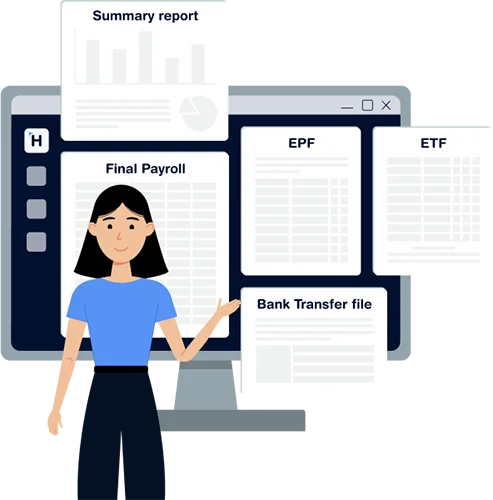For many SMEs in Sri Lanka, expense claims are still a relatively new area and mostly involve manual processes. Employees staple paper receipts to handwritten forms, leave them on a manager’s desk, or email scanned copies to HR with a few vague lines of explanation. This routine might have worked when teams were smaller and fewer claims were made. But as businesses grow, this paper-based approach creates more delays, errors, and missed reimbursements than ever before.
Digital workflows for expense management are fast becoming the norm for forward-thinking SMEs. With growing adoption of HR software solutions, even smaller businesses are beginning to realize that managing expenses digitally is not just about saving paper, it’s about creating a streamlined, auditable, and efficient system that benefits both employers and employees.
Here’s a look at why the shift from paper to digital workflows is reshaping how SMEs handle expense claims, and what it means for the future.
The Pain Points of Paper-Based Claims
Paper-based expense processes create multiple challenges for SMEs:
- Receipts go missing or are illegible
- There’s no standard format for submission
- Managers struggle to track which claims are pending or approved
- Finance teams spend hours entering claims manually into spreadsheets
- Reimbursements are often delayed, frustrating staff
In many local businesses, this leads to unnecessary employee dissatisfaction and financial mismanagement. Repeated follow-ups, errors in calculation, and lack of visibility all eat into valuable time that could be better spent growing the business.
The Digital Workflow Advantage
Moving to a digital workflow changes everything. With an HRIS-integrated expense management system, SMEs can:
- Enable employees to submit claims from anywhere using mobile or desktop
- Set up standard categories for claims (e.g., travel, supplies, meals)
- Attach digital copies of receipts directly to each claim
- Route claims automatically to the right approver
- Track the status of each claim in real-time
- Ensure all approved claims sync seamlessly with payroll
This structure reduces confusion, eliminates paperwork, and creates a clear process everyone can follow, even if they’re working remotely or across different branches.
Faster Reimbursements, Happier Employees
One of the biggest advantages of digitizing expense management is speed. In a traditional setup, reimbursements might take weeks, especially if forms sit on desks or get lost in email chains. With a digital system, approvals and processing can happen within days or even hours, depending on the business setup.
This not only boosts employee morale, but also reflects positively on your internal employer brand. Employees feel that their contributions are recognized and that the company values transparency and professionalism.
Built-In Policy Control and Error Reduction
Digital systems can also be configured to follow your company’s expense policies. For example:
- Automatically flagging claims that exceed allowable limits
- Ensuring receipts are attached before a claim is submitted
- Blocking duplicate claims for the same expense
This reduces the chances of human error, intentional or unintentional policy violations, and disputes over reimbursements.
For SMEs with limited finance staff, this level of built-in control can free up considerable time and reduce friction between departments.
Better Visibility, Reporting, and Audit Readiness
When expense claims are paper-based, pulling data for audits or management reporting is tedious. Digital systems make this easy. You can:
- Generate reports by expense type, department, or time period
- See which categories are overused or under budgeted
- Maintain a full audit trail for each expense submission
This level of insight helps business owners make smarter financial decisions, plan budgets more accurately, and ensure compliance with internal policies and tax regulations.
A Simple Step Toward Smarter Operations
You don’t need a massive budget or a large finance team to move from paper to digital. Many Sri Lankan HR software platforms today offer expense modules that are affordable and easy to set up. For SMEs, this means you can begin digitizing your expense process with minimal disruption and scale it as your team grows.
Whether you’re managing 10 or 100 employees, embracing digital expense workflows is a clear step forward. It’s a practical, affordable way to reduce admin overheads, increase employee satisfaction, and gain better financial control



